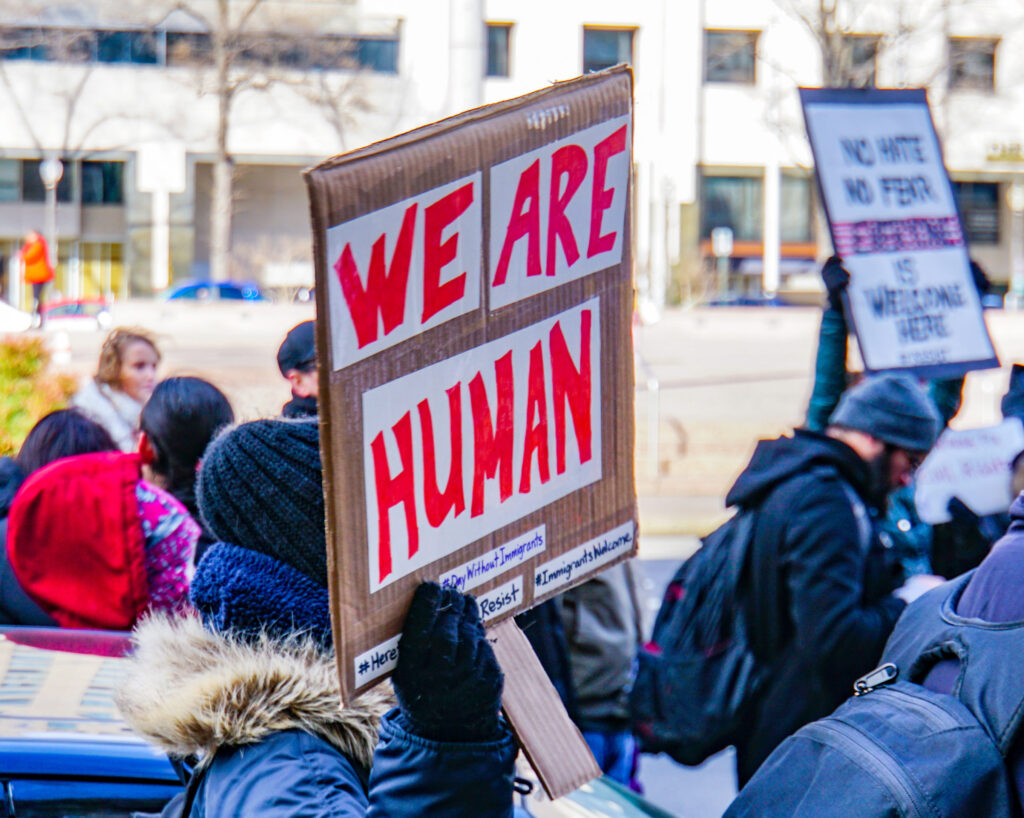
June is Immigrant Heritage Month – a time to celebrate immigrants and the contributions they have made to our communities. Sadly in this same month, 80 people traveling from Libya to Italy died when their boat sank off the coast of Greece. The ship was carrying some 750 passengers – the majority of whom were from Egypt, Pakistan, Syria and the Palestinian territories.
This most recent shipwreck received far more media coverage than the shipwreck that happened four months earlier. Back in February 2023, a boat carrying migrants from Pakistan to Europe sank, killing 120 people. Even though the June event was widely reported, it was largely overshadowed by coverage of the five lives lost in the wreckage of the Titan Submersible.
The Missing Migrants Project recorded 3,789 deaths migrant deaths in the MENA region last year. This number accounts for half the total recorded number of deaths worldwide. The majority of deaths happen on sea routes in the Mediterranean Sea.
Similar loss of life happens on American borders as well. Since 1998, at least 8,000 undocumented migrants have died attempting to cross the border from Mexico to the US. Unlike the dangers faced on the high seas, immigrants making their way from South and Central America to North America travel through desert areas with few sources of water, steep rocky terrain, and extreme weather. It is a treacherous route say the least. Those that make it often have significant physical and mental health issues as a result of those experiences.
Many Reasons to Leave
Some might think the hardships and high mortality rates associated with migration would serve as a deterrent to migration. The record numbers of migrants indicate it doesn’t. The heart-breaking reason: people feel compelled to leave their home countries because the permanent conditions there are far worse than the temporary conditions they know they will find on migration route.
Immigrants from South and Central America have few economic opportunities, low standards of living, and are exposed to violence and government corruption. Those fleeing Egypt are trying to escape poverty, economic crisis and authoritarian repression. Reasons to leave Pakistan have increased in recent years as the power of the Taliban has grown spurring a constitutional crisis and driving up rates of poverty. Unlike the Pakistanis, Syrians have been facing a civil war for over a decade. Over 12 million Syrians have been displaced as a result of the conflict and international aid has proven to be insufficient to stem the humanitarian crisis there. Palestinians find themselves in a similar situation: extreme poverty is rampant and threats of violence are constant.
Immigrants, filled with a sense of desperation, are forced to pick between two bad options.
It Only Gets Harder
One would hope that, once immigrants make it successfully to a new country, life gets easier. Unfortunately, that’s not the case. Immigrants often face uncertainty related to housing, employment and finances. This uncertainty can lead to heightened stress and anxiety. Limited English proficiency can further complicate immigrants’ ability to resolve daily issues, causing feelings of isolation and alienation. These feelings can be exacerbated by the discrimination and racism immigrants often face. All of these challenges are exacerbated when immigrants lack the documentation needed to apply for social services.
Another challenge newly arrived immigrants face: processing trauma. Some of this trauma is a result of the conditions they faced in their home country. Trauma also results from having experienced violence, exploitation, or natural disasters on their journey. Add to this the reality that adjusting to life in a new country can be a disorienting experience: the rules, the customs, the norms, are all unfamiliar. Many immigrants are further traumatized by life in a new place where basic needs of food, shelter and safety go unmet. Many have been separated from family and friends. This complex trauma often results in depression and anxiety disorders. For children, trauma often manifests as poor socio-emotional adjustment, hyperactivity, and academic difficulties.
These individual level issues have significant implications for society. The United Nations estimated that as of 2015, 46.6 million people living in the United States were not born there. This means that about one-in-five international migrants (19%) live in the U.S. This is a sizable portion of American society and one that would benefit from additional supports and services to facilitate their adjustment and assimilation.
Ways to Be Helpful
Given the challenges that immigrants face, small acts of kindness can make a big difference in their lives. Consider the following ideas for how to be supportive:
- Demonstrate empathy for the immigrant experience. Consider what it must feel like to adjust to life in a new place after having lived for so long in such challenging environments. If you are struggling to know know “what to do”, try putting yourself in their shoes. There’s no one “right way” to make newcomers feel welcomed. Visits, invitations them to community events, offering to show them around, or simply extending a warm greeting each time you see them can make a huge difference.
- Consider the specific ways you are positioned toassist with common challenges like finding housing, securing employment and accessing health care. Simply explaining how local government systems work and how to navigate bureaucratic processes can be incredibly helpful. You can also offer to assist completing forms. While completing a form may seem easy for you and I, it might be overwhelming for someone with limited English proficiency.
The things we do as individuals can make a huge difference for immigrants but our impact can be even greater when we join forces with organizations and nonprofits whose mission is to support immigrants. By donating time, money, resources, and expertise to these organizations, we can have an even bigger impact on our local communities and society. Many organizations have structured education and visitation programs. Consider volunteering with programs that have been designed to address the most common needs.
Finally, and possibly most importantly, explore ways to educate others and raise awareness about the experiences of immigrants in the United States. You can help others learn more about immigration – the rules, challenges, and root causes for the current conditions. Helping people gain a better understanding of the current realities will help reduce prejudice and discrimination and create a society that is more hospitable to immigrants. Likewise, you can lead by example and model the use of using respectful language. Many people do not realize that terms like “illegal alien” and “illegal immigrant” are dehumanizing.
Every little thing you say and do to counter discrimination can go a long way in creating a society more hospitable to immigrants.
